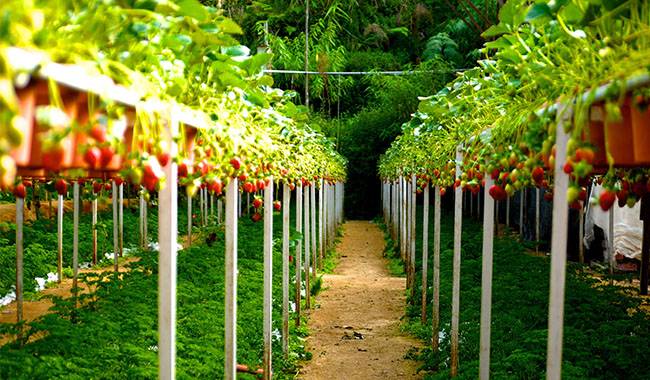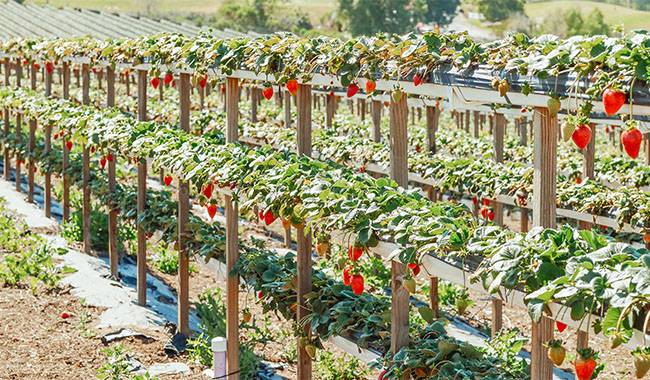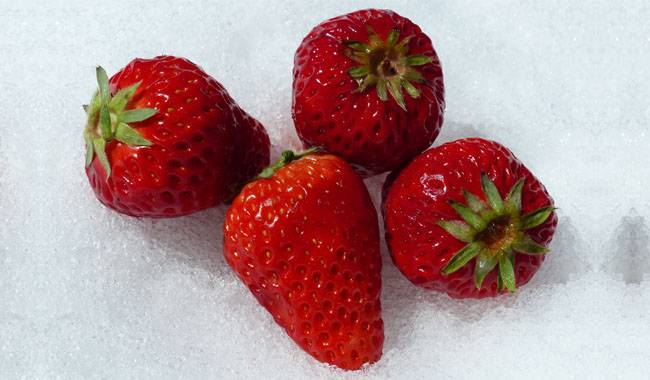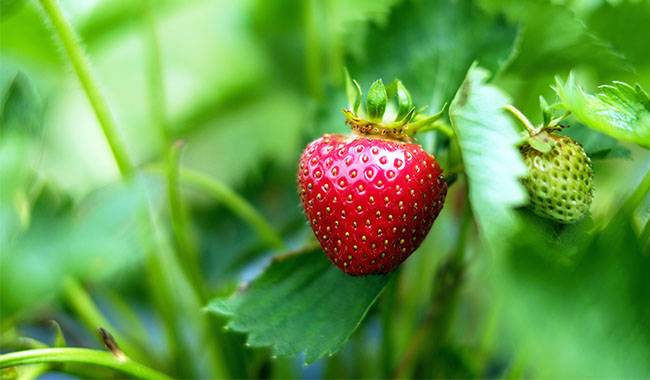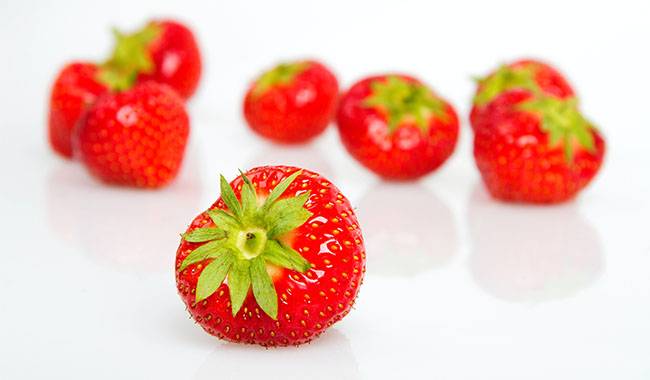
Sooner or later, some of us will come into planting or carve out a garden of strawberry plants on his own land. The more we deal with this crop, the more questions we will have.
This is a good curiosity! After all, many features of this berry can cause not only surprise but sometimes even confusion.
Why are the leaves on one raised bed light-colored, while those on another are dark? Why is the yield small? Why do different sizes and shapes of berries grow on the same bush?
Why do some bushes produce a lot of beards while others produce very few? About all this and more, I will try to tell you in this article.
TOP 13 QUESTIONS AND ANSWERS ABOUT GARDEN STRAWBERRIES
HOW MANY SPECIES OF STRAWBERRIES ARE THERE?
Despite the fact that scientists have been studying strawberries for more than a decade, there are still many unexplored species in nature to date, most of which grow in the United States and Eurasia. Overall, the genus Strawberry (Fragaria) has been collected by experts about 30 species of strawberries around the world.
The most famous of them are.
Wild strawberry, green strawberry, strawberry muscadine, etc…
Finally, the garden strawberry or pineapple, which is the vast majority of those grown in our neighborhoods.
But it is more difficult to answer how many varieties there are on the planet today: more than 20,000! But it’s a good thing because breeders try to fight for it and they really succeed.
If in the 60s large berries weighed about 6-7 grams, today they are more than 15 grams. But there are quite a few varieties where the berries reach weights of over 100 grams!
HOW MANY YEARS CAN A STRAWBERRY BUSH GROW AND BEAR FRUIT?
Many of us know that every two to three years we have to transplant our garden strawberries to a new location and renew the planting with younger plants. However, the question often arises, is this really true?
Usually, the life expectancy of a garden strawberry bush is about 15 years, but more commonly it is 8 to10 years.
Also, the production period of the plant is limited to 2-4 years. Why? Every year, the number of horns in the bush increases and so do the number of flower buds, but the root system is aging and cannot provide the bush with the necessary nutrients to form a bumper crop. Therefore, the older the bush gets, the lower the quality and quantity of the berries.
At the same time, indicators of both the plant’s lifespan and its reproductive period depend on external conditions – the more they meet the needs of the culture, the longer it will live and the longer it will endure. However, only the first years are the most productive.
WHY ARE YOU NOT SATISFIED WITH THE GARDEN STRAWBERRY CROP?
In the first year after sowing, the garden strawberry is weak in flowering and this is normal for young plants. But even in the second year, there are few flowers on the berries.
The reason for this may lie both in the characteristics of the variety (there are varieties with low, medium, and high productivity) and in the violation of care.
In young strawberry bushes, a pedicel with 5 to 7 flowers.
From two years old, there are 15 to 30 flowers. The roots of strawberries tend to grow in waves, take a break in the cold winter to pour in berries, and are regularly renewed.
They form in late summer and fall and live for about nine months, providing the work of the above-ground part of the shrub and laying down the flower buds. Formed in spring, they are responsible for pouring in the berries.
Therefore, if the strawberry is not sufficiently watered after the harvest, its roots will not be able to grow back and the plant will not receive enough nutrients, which means that it will not have enough strength to lay a large number of buds for the next season.
A bumper crop for the year. Therefore, not only must strawberries continue to be watered after harvest, but they must also be fed.
For the formation of the strawberry crop, not only the root system is responsible, but also the leaf equipment. The leaves formed in the spring support the development of berries. The leaves formed in summer are the process of placing flower buds.
Another reason may be the lack of light. Some varieties can tolerate shade well, but in most cases, not getting enough sunlight (planted in shade or with fences), the buds are not formed as strongly as under optimal conditions.
What else does it affect? Freezing. Usually, strawberry flowers bloom after suffering damage from low temperatures in winter, but the berries are not tied because the pistil suffers (still in the germ state). It does not turn into berries and flowers due to spring frost.
The number of berries and diet deviation are affected. In most cases, small crops with small amounts of N or B deficiency are formed.
Does not allow plants to grow large amounts of buds and severe diseases (bush weakening). and insect pests, such as nematodes. Of course, there are also violations of lending rules. If the root ring deepens or, on the contrary, lies above the soil height, the plant is inhibited and the berries become smaller.
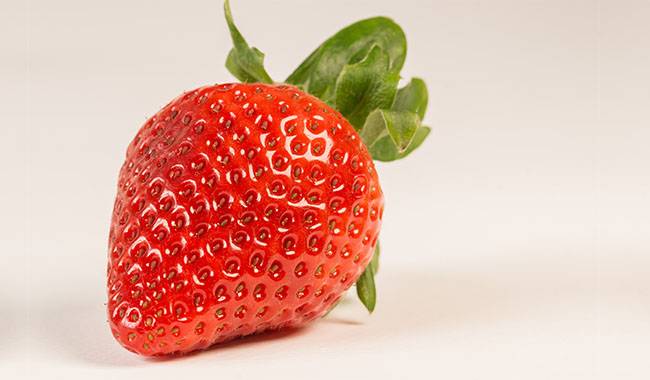
WHY DO STRAWBERRIES BLOOM, BUT THE BERRIES DO NOT CONSIST OF ALL FLOWERS?
In some varieties, the crop is formed only by the first and second flowers, and less frequently by flowers of the third order, while the upper flowers become dry. This is because the upper flowers of these varieties are physiologically male which is unable to pollinate, which means they cannot form berries. Another reason is the lack of light. In low light, the number of sterile flowers increases.
WHY DOES ONE RAISED BED OF STRAWBERRIES HAVE MORE WHISKERS AND THE OTHER HAS LESS?
The ability to produce whiskers is a cultivar trait. Some cultivars develop more whiskers, while others have fewer.
Also, the length of the internodes on the tendrils varies from variety to variety. Some neutral day varieties, on the other hand, produce a reproductive organ, the flower stalk, instead of the tendrils. This results in an almost continuous flowering period.
In most cases, the length of the strawberry bush is about 1 meter or more, which must be taken into account when starting seedlings.
In the laboratory, more than 200 new rosettes can be produced from a single mother plant. In practice, however, the closer the rosette is to the mother plant, the better it develops, the stronger the root system, and the greater the production potential. Therefore, rosettes of orders 1, 2, and 3 are mainly taken from seedlings.
In some cases, the formation of abundant beards may also be determined by external conditions – if the strawberry is grown in the absence of light.
Weakened plants will produce fewer tendrils if they are severely affected by pests and diseases.
WHY DO BERRIES OF DIFFERENT SIZES AND SHAPES FORM ON THE SAME BUSH?
There are many berry forms of garden strawberry, but there are 10 main ones. The typical form is determined by most of the crop.
The berries of the first order, on the other hand, differ slightly from the basic form. But otherwise, they are always larger than the others, sometimes three or four times larger.
The most peculiar form of garden strawberry berries is comb-shaped. Such berries are formed by a cluster of flowers (formed by the fusion of two or three flowers). Charm is a varietal characteristic.
As a rule, the size of strawberry berries depends not only on the variety and the order of arrangement on the flower stalk but also on the maturity period, as well as on the condition of the plant – age of the tree, foliage, the degree of pest and disease damage, soil composition, lightness of planting.
ARE STRAWBERRIES SENSITIVE TO ROOT DAMAGE?
On young rosettes, roots are first formed, and with the passage of time, the largest roots grow out of them, which determine not only the power of the bush but also its yield potential.
Therefore, it is important to select well-developed seedlings with strong root systems and to plant them with as little damage as possible.
Select seedlings from the mother bush and do not pull the sockets out of the ground, but carefully dig them up or immediately tie them into a cup for further transplanting.
DOES STRAWBERRIES HAVE A DORMANT PERIOD?
Scientists do not have a definite answer to this question. It is impossible (within a month) to remove strawberries from a month because they fall into a dormant state due to growing conditions, including low temperatures in winter. However, being an evergreen plant, strawberries do not particularly need it.
Experiments have proved that under certain conditions strawberry plants are able to pre-harvest whether they are in a forced dormant stage or not. Mainly because there are conditions under which buds can be placed in some varieties. They will be for a short time (up to 12 hours).
HOW EARLY DO STRAWBERRIES WAKE UP IN SPRING?
The roots of garden strawberries start growing when the temperature of the root-bearing soil layer warms up to 2-3°С (35.6-37.4°F), and the leaves start growing only after about 7-10 days.
In most climatic zones the growth of above-ground parts becomes active when the temperature is 5-8°C (41-46.4°F), and in the south, it is 2-5°C (35.6-41°F).
In autumn, root growth stops when the soil temperature drops to 7-8°C (44.6-46.4°F) and stops completely at 3°C (37.4°F).
The sap progress of garden strawberries is much earlier than activating the growth of the above-ground parts.
HOW DO I UNDERSTAND THAT STRAWBERRY BUSHES ARE DAMAGED BY LOW TEMPERATURE?
- From the appearance
Healthy plants have green leaves. Damaged leaves have a lot of brown leaves (but the corners of these bushes can still survive). In completely dead plants, during the melting process, the bush “sits” and even the remaining green leaves “fall”, after which the whole plant dries out. - By the color of the roots
A healthy root system is a yellow or light brown. Such a bush stays well in the ground. If dead, the plant is easily pulled out of the soil and its roots are dark. - By the condition of the horns
The horns in a healthy bush are cut white or light green. In damage, yellow, brown, and brown depending on the degree of damage. Yellow and light brown is light damage (not considered dangerous). Brown – severe damage, indicating tissue death.
And depending on the state of the flower. If its center turns black, the pistil dies, and berries are not formed from such flowers. If the pistil is partially damaged, the deformed fruit will fall out of the flower.
WHY DO SOME SHRUBS HAVE LIGHT LEAVES AND OTHERS HAVE DARK LEAVES?
The size, shape, leaves, petal color, flower stalk length, shape, color, berry flavor and size, and leaf shape and color of shrubs are all varietal characteristics of the plant.
But it is not always. Sometimes these characteristics change depending on the growing conditions that have an important influence on the strawberry: soil composition, place of planting, applied agricultural techniques, age of the shrub.
However, it is noted that the more leaves on the plant, the higher its yield. Therefore, care should be taken to ensure that strawberries establish a complete leaf apparatus.
The number of leaves per leaf varies from variety to variety. Some have 3, some have 4, and some have 5 leaves. The shape of the leaves also varies.
They can be obovate, diamond-shaped, oval, round, etc. Often the middle leaves can have some sort of transitional shape.
The varieties also differ in the shape and arrangement of the margins of the leaves – the denticles. In addition, the leaves can be nearly flat, or they can have curved or compound curved edges.
If we talk about color, there are also variations in shades (green), as well as differences in the intensity of the shine on the upper edge, and even differences in the color saturation of older (darker) and newer leaves.
Important! In order not to confuse the varietal characteristics of the external signs of the garden strawberry bush with the signs of nutritional deviations, it is recommended to evaluate the color of the leaf apparatus of the variety during the flowering period.
There are also differences in the intensity of leaf pubescence. The more robust varieties are more drought-resistant. And in the color of the petioles – in varieties with bright and dark red berries, they are pink.
As for the berries, in addition to the differences in shape, color, flesh color, taste, and consistency, the degree to which the bone is immersed in the flesh varies.
And the deeper they have immersed: the less transportable the berries are (such varieties should be eaten immediately after consumption). The more superficial they are, the better they are for storage (suitable for marketing and for freezing).
WHY ARE BERRIES NOT SWEET?
The reason why berries are not sweet can be due to varietal characteristics. The variety is ripe and can be transported well so it is suitable for market growth.
However, sweets are usually affected by nutritional imbalances (too much nitrogen, potassium, or boron deficiency), violations of watering practices (too much or lack of water), and insufficient light.
WHY DO INDIVIDUAL STRAWBERRY BUSHES BLOOM REPEATEDLY?
Repeat flowering is a sexually active variety in strawberry gardens. They usually bear fruit until frost. But it happens that in one of the summer variants, individual bushes flower again. This is how semi-improved varieties behave.
If conditions permit, individual plants of semi-improved varieties (“Cardinal“, “Zenga-Zengana”, “Redgontlit”, etc.) bloom in August flowering and re-harvesting. This happens most often in the cold spring.




